by cidaut | Oct 21, 2020 | Sin categoría
Despite all limitations derived from the lockdowns and restrictions imposed after the outbreak of Covid-19 in Europe, ReFreeDrive Consortium has managed to deal with the situation and go ahead with the project activities in these last months. A six months extension has been agreed with the CE to compensate the unexpected delays, therefore the project will now end in March 2021.
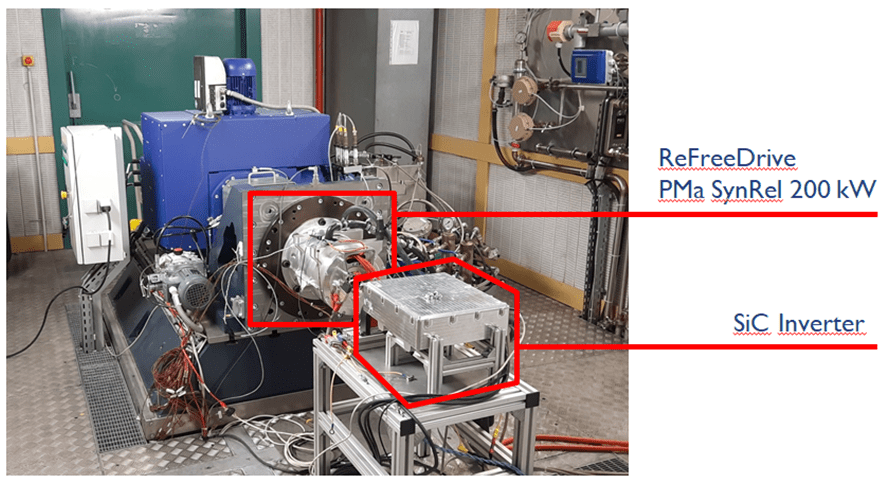
After the comeback to the industrial activity was allowed, the manufacturing and testing of the prototypes was resumed. At this point, both permanent magnets assisted and pure synchronous reluctance motors for 75kW and 200kW applications have been delivered and tested at IFPEN facilities. Induction motors are expected to be fully assembled in the following weeks. Powertrain integration activities are now beginning at CIDAUT, and preliminary in-vehicle integration tasks (such as installing cooling circuits and the battery pack) have already started at PRIVÉ.
Several dissemination activities have been organized in the last months to maintain audience engagement. Especially relevant have been the two ReFreeDrive webinars aiming to share the project scope, objectives and achievements with technical and non-technical audiences. Up to now, the topics covered in the webinars have been “Rare earth-free motor designs for e-mobility” and “Control strategies and electric drive design of induction and synchronous reluctance motors for e-mobility”. Moreover, ReFreeDrive participated with all other GV04 H2020 EU-projects (DRIVEMODE, MODULED) in a webinar titled “Next generation electric drivetrains for fully electric vehicles, focusing on high efficiency and low cost”, in the context of the European Mobility Week, which took place from 16th to 22th September 2020.
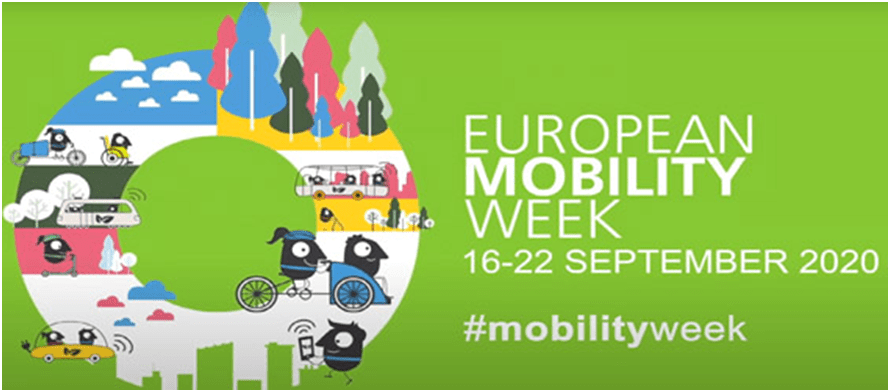
Last, but not least, on 1st October the 36-months General Assembly meeting was celebrated as an online meeting. There, the project progress was evaluated and all the ongoing activities monitored, and the activities for the last months of the project were scheduled to ensure that all tasks end successfully in time.
by cidaut | Oct 21, 2020 | Sin categoría
The World Hydrogen Congress took place online from 22-24 September and CIDAUT could attend it thanks to the collaboration of AeH2. The World Hydrogen Congress is the annual meeting place for senior decision-makers right across the hydrogen production and distribution value chain. An outstanding executive line up augmented by strong association support from both the blue and green hydrogen markets is leading to what promises to be a unique event for all hydrogen executives.
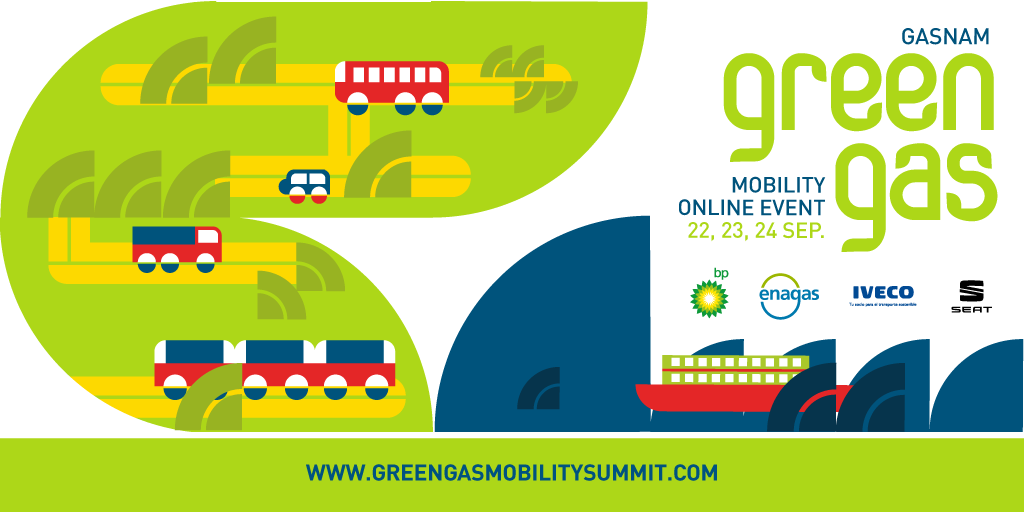
The congress lasted for three days with presentations and debates from the main stakeholders in the hydrogen sector through an innovative platform of thought-leaders, exchanges and debates between key hydrogen stakeholders, technology & science providers and world-leading industry views.
Continuing with hydrogen-related events, CIDAUT, as a member of GASNAM (an association that promotes the use of natural gas, hydrogen and renewable gas in mobility, both land and sea, in the Iberian Peninsula), attended the annual meeting on gas mobility that this association organizes.
This year, under a 100% virtual format, the Green Gas Mobility Online Event has had more than 50 conferences, B2B meetings, and a large virtual exhibition. For three days, from October 22 to 24, the benefits that the use of carbon neutral gases such as biomethane, synthetic gas or hydrogen brings to mobility have been analyzed.
by cidaut | Oct 21, 2020 | Sin categoría
European Clean Hydrogen Alliance (ECH2A) was launched earlier this summer, following the European Commission’s presentation of an EU Hydrogen Strategy, and has rapidly grown to over 400 members (companies, research organizations and public authorities). CIDAUT is one of the members that support the alliance within the Research Centers and intends to be present at the working groups that will be organized soon.

ECH2A as a partnership across countries and industries will pave the way for a strong European position in hydrogen technologies and applications. With the alliance, the EU wants to build its global leadership in this domain, to support the EU’s commitment to reach carbon neutrality by 2050. The alliance will establish an investment agenda and support the scaling up of the hydrogen value chain across Europe. The alliance will play a crucial role in facilitating and implementing the actions of the new European hydrogen strategy and in particular its investment agenda. An industry blueprint estimates investments of €430 billion until 2030. It will also be important in the context of the new energy system integration strategy.
But this has not been the only event around hydrogen in which CIDAUT has been present. As a great milestone, last October 6th, the Spanish Government approved the “Hydrogen Roadmap: a commitment to renewable hydrogen“. A total of 78 entities, organizations, associations and individuals have sent contributions to the public consultation of the Hydrogen Roadmap among which is CIDAUT.
With this roadmap, the Government at the proposal of the Ministry for the Ecological Transition and the Demographic Challenge is promoting the deployment of this sustainable energy vector, which will be key to Spain achieving climate neutrality by 2050 at the latest. The development of renewable hydrogen will promote the creation of innovative industrial value chains in the country, technological knowledge and the generation of sustainable employment, contributing to the reactivation towards a high added value green economy.
Some key points to note:
-60 measures & objectives for the implementation of renewable hydrogen by 2030, aimed at the production of renewable hydrogen and the following areas: industry, mobility and the electricity sector or energy storage.
-An intermediate milestone for 2024 is considered: 300-600 MW of installed electrolyzer power.
A great step to advance towards a hydrogen economy in our country, in which CIDAUT will continue working to promote the technological and industrial development of hydrogen.
by cidaut | Jul 23, 2020 | Sin categoría
Sixteen different users have tested the applications developed at SAFE STRIP Project in Cidaut’s facilities
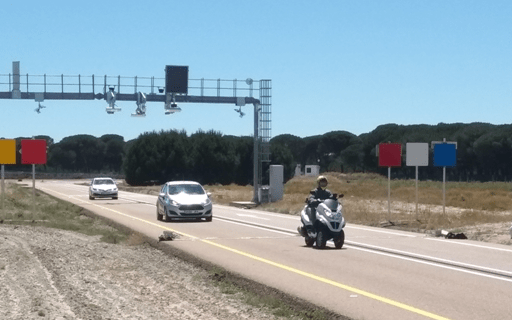 SAFE Strip Project, funded by the European Commission, is reaching its final stage with the users’ trials. The tests are running at Italy, Greece and Spain, under Cidaut’s responsibility. The Spanish pilots have been performed at Cidaut’s facilities, a controlled test track at Mojados. Six riders and ten drivers have tested nine different scenarios, where the applications developed along SAFE STRIP Project to support the users for a safer, more fluent and more ecologic way of driving have been evaluated.
SAFE Strip Project, funded by the European Commission, is reaching its final stage with the users’ trials. The tests are running at Italy, Greece and Spain, under Cidaut’s responsibility. The Spanish pilots have been performed at Cidaut’s facilities, a controlled test track at Mojados. Six riders and ten drivers have tested nine different scenarios, where the applications developed along SAFE STRIP Project to support the users for a safer, more fluent and more ecologic way of driving have been evaluated.
The solution developed can be used in any kind of vehicle, independently from its automation level, because the information can directly reach the vehicle for the higher automation levels or be presented to the users through a friendly HMI in their portable devices, iOS or Android, for the lower levels. Most of the applications tested at Cidaut are related to safety: vulnerable road user protection, wrong way driving, motorway exit, work zone detection and variable message signal for low visibility, liquid on the road or heavy traffic. Others are oriented to improve the users comfort, the traffic flow and to reduce the environmental impact, like the virtual toll or the parking and charging application.
The system is based on the use of low cost components and sensors that thanks to different communication technologies provide intelligence to the transport system, obtaining as a result the cooperation between the different users of the road and the infrastructure. All the information provided by the different stakeholders is sent to a server in the cloud where all the information is managed and suitable messages are sent to the users through a friendly HMI with simple pictograms to improve safety, traffic flow and efficiency.
The applications tested allow the driver to be aware of critical situations like a hidden pedestrian crossing the road, a vehicle driving in the wrong direction, a vehicle stopped in a motorway exit, sliding pavement, lane closed due to road works, heavy traffic in front or low visibility. There are also applications dedicated to the comfort of the users, because the system allows the user to pay the toll on the air, without stopping or going through complex gates. With the solution developed is also possible to receive information about available parking slots and to make the payment totally automatically, without walking to the park meter nor having to start and stop the application, because it works automatically when the vehicle is parked.
The tests have allowed to evaluate in real conditions the performance of all the applications and also to measure the acceptance of the future users.
by cidaut | May 12, 2020 | Sin categoría
Cidaut has successfully finished CERO Project, with the cooperation of three automotive companies from Castile and Leon region: Grupo Antolín Ingeniería, ZF TRW and Casple S.A. The project has been funded by the “Instituto para la Competitividad Empresarial”. The main objective achieved thanks to the development of the project has been the research and development of new urban mobility solutions based on the integration of connectivity, automation and electrification. Cidaut considers that the electrification of the mobility should start in the urban environment for several reasons: importance of the air quality in cities, better energy performance of electric vehicles in urban driving conditions and easiness for infrastructure access. In several phases of the project, Casple’s urban electric vehicle prototype has been used to demonstrate the results achieved.S.A.
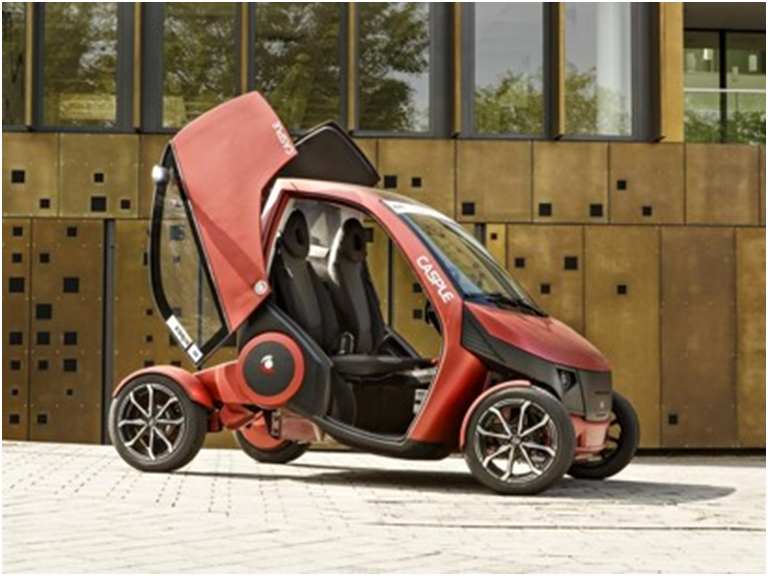
The project has been divided in three main tasks, the first one oriented to determine the needs of the future urban electric vehicles, the second aimed to obtain integral safety for this kind of vehicles and the third one looking for the enhancement of the communication capability of vehicles and infrastructure. The first task has allowed to establish a deep knowledge about the new urban transport needs from last mile logistics to mobility as a service solution that will have to overcome the tight mobility restrictions that will be progressively applied in different cities in the coming years and that have been also analyzed along CERO Project.
The second activity has covered all the aspects relative to safety from an integral point of view. The automated driving blurs the limit between active and passive safety, integrating both with the final objective of reducing the fatalities to CERO. The project has advanced in this direction presenting innovative solutions not only for the occupants but also for other vulnerable users of the road. In collaboration with ZF TRW, new restrain systems for automated driving levels 3 and 4 have been developed taking into account the new positions of the occupants in the automated vehicles. The pedestrians and cyclists safety has been improved through the development of artificial vision solutions, which identifies this kind of users, evaluates the risk of accident and alerts the vulnerable user and the driver/car (depending on the degree of automation) about the possible accident.
Finally low cost communication solutions have been developed for V2X applications. The solution adopted has allowed the implementation of different advanced solutions that will allow to increase the safety, improve the traffic flow and reduce the environmental impact of the traffic. Some of the communication applications tested along CERO project are: traffic jam detection, information about road works, allocation of points of interest, and speed recommendation to optimize green light flux.
by cidaut | May 12, 2020 | Sin categoría
The European Project STEEL S4 EV, funded by the Research Fund for Coal and Steel (RFCS) has successfully completed the first half of research and development activities. This item has coincided in the time with the presentation of the design of the second vehicle of the project: the threewheeler. The design presents several parallelism with the four wheels vehicle defined in the first stages of the project. The objectives behind this similarity are multiple, on one hand to simplify and make cheaper the manufacturing process, making possible to assembly both vehicles in the same assembly line, on the other hand to warranty the same level of integral safety as in the four wheels vehicle.
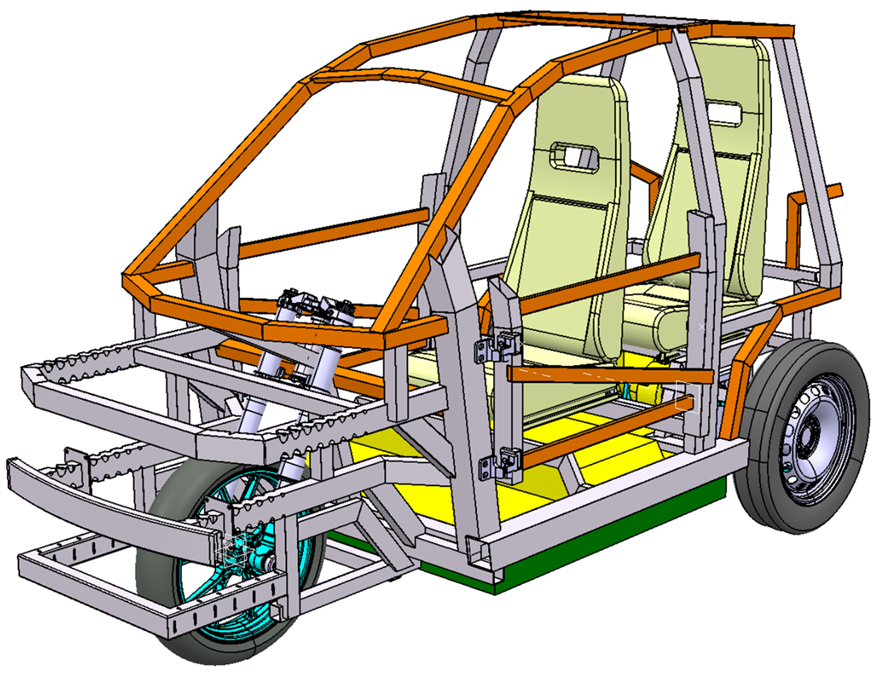
The solution adopted for the threewheeler is a two in line seats vehicle, with one wheel in the front, the electric motor in the rear axle, under the rear seat, and the battery pack under the front seat. The structure of the vehicle is made of different grades of Advanced High Strength Steel, where the geometry of the tubes and their thickness have been optimized to maximize the energy absorption in the frontal part of the vehicle and to warranty the undeformability of the safety cell, where the occupants are allocated.
In order to get this target, in parallel to the optimization of the crashworthiness through the finite elements methodology, advanced research is been done about the optimization of the welded joints of the advanced high strength steels. In every welding joint, not only the weld seam, but also the heat affected zone, suffers an important loss of mechanical properties due to the melting and uncontrolled cooling of the material. In the case of the Advanced High Strength Steels, this loss of properties is still more critical due to the special characteristics of the material. One of the objectives of STEEL S4 EV Project is to optimize the welding parameters, to improve the heat treatment of the joints in order to improve the static, dynamic and fatigue behavior of the welding joints of the complete structure of both vehicles, the three wheeler and also the four wheels vehicle.
In April, it has been held the Midterm Review Meeting of STEEL S4 EV Project, between the Project Coordinator, the Project Officer and some technical experts from the TGA 4. After a successful meeting, the activities of the project go on with the focus on the prototype manufacturing and the preparation of the different tests.






